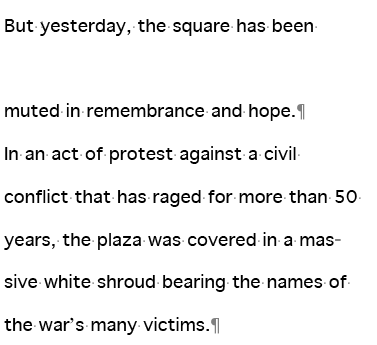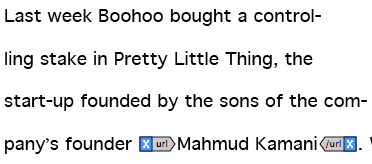If the nucleus of an atom were the size of a marble, it is said, then the electrons in the widest orbit around it would be a football field away. There’s “a large volume all around it that’s mostly empty space”, according to Professor Stephen Ekker of the Mayo Clinic. That emptiness is not irrelevant: it is an essential part of the atom’s nature, the “sphere” (to use the Bohr model as a metaphor) in which interactions take place that distinguish it from other elements. To collapse that space is only possible under the most extreme conditions, and, when it happens, brings about a complete change of state.
The other phenomenon of which this is true, of course, is the feature article. Here too, the air, the space around the nucleus is the important thing: the colour, the atmosphere, the writing, rather than the tiny fact in the centre. But here too, under sufficient pressure – for example, say, if a 600-word feature were unaccountably reassigned to become a 55-word picture caption* – an implosion can occur that similarly creates a material of an entirely different and unlovely type: news.
Under such extreme conditions, of course, the last 500 words of the feature are swept away at once, leaving only the first two paragraphs intact, somewhere within which the central news item is located. Here are those paragraphs in their original form:


Then the remorseless crushing begins, in which atoms of news, underlined in red, are compressed until no space remains between them:


And eventually, you end up with this:

The opening passage, shorn of any entertainment value, has been reduced in size by more than 60%, from 91 words to 34. A diaphanous stellar ornament been replaced with a neutron star: dense, grim, unsparkling, and emitting bursts of information on a set frequency. But at least there’s space for the photo credit now.
*Seriously, this actually happened







